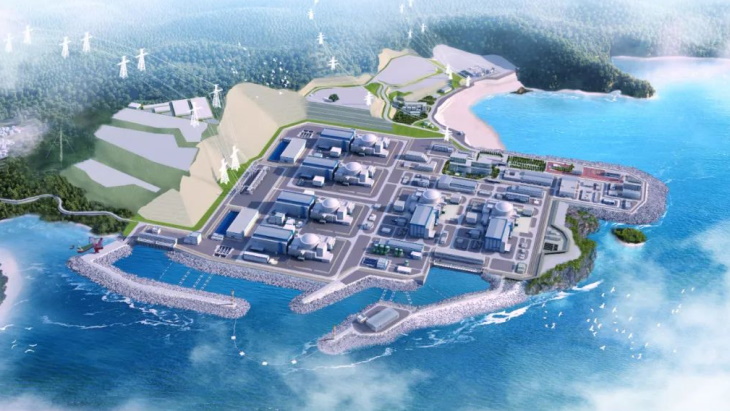The construction of unit 1 of the San’ao nuclear power plant in China’s Zhejiang province has “entered a new stage,” according to China General Nuclear (CGN), following the start of equipment installation within its nuclear island.
The executive meeting of the State Council authorized the construction of units 1 and 2 as the first stage of the six-unit San’ao plant on September 2, 2020. On December 30, that year, China’s National Nuclear Safety Administration issued a construction permit for the two Hualong One units, and the first concrete for unit 1 was poured the next day. Unit 2 construction began on December 30, 2021.
“At this time, the hoisting of steel lining cylinder 6 of unit 1 and the hoisting of steel lining module 1 of unit 2 have both been completed successfully,” CGN stated. The company revealed that the start of installation of the nuclear island of unit 1 is a significant milestone in nuclear power construction.
Read Also: El Dabaa Nuclear Power Plant (NPP) Project Updates
The complexity of the nuclear island installation and expectations for the San’ao nuclear power plant
The nuclear island installation project, according to CGN Cangnan Nuclear Power Company Deputy General Manager Liu Jianyi, is a “highly comprehensive and complex system project, with many process systems, complex construction technology, strict quality control, high safety level, special inspection and experimental methods, and involves nuclear-grade equipment and large-scale hoisting.”
San’ao 1 and 2 are set to start supplying power in 2026 and 2027, respectively. Once all six units at San’ao are operational, the annual power generation capacity will reach 52.5 billion kWh, surpassing Wenzhou’s annual power consumption in 2020. According to the company, the plant could reduce standard coal consumption by more than 16 million tonnes and carbon dioxide emissions by 43.36 million tonnes per year.
The San’ao project is the first in China to involve private capital, with Geely Technology Group owning a 2% stake in the plant. CGN owns 46 per cent of the project company Cangnan Nuclear Power, with the remainder held by other state-owned enterprises.

